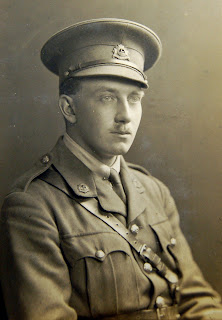Tuesday 6th August 1918
Yesterday we mentioned that 2nd Battalion was in the same positions 7th Battalion had occupied just before their triumph on the Somme in 1916. Many of the men in 2nd Battalion recently came from 7th Battalion and saw their current position as an omen for a successful attack, which the whole army seems to feel is coming. However, the enemy beat them to it.
Last night the battalion was due for relief by 8th Battalion, London Regiment, part of 174th Brigade. Arrangements were made accordingly, and owing to the bad state of the trenches and the heavy shelling, guides for the incoming units were ordered to start with their relieving Platoons from further forward, in order to get as far as possible before dark. At the last moment the incoming 174th Brigade altered all arrangements and postponed the start till 9.30 p.m. and it was actually 10 p.m. and quite dark before the guides were able to start. The men were by then very exhausted and distressed from the start, and progress was slow.
At 3.30 a.m. this morning the leading company was stuck in the communication trench 600 yards short of the front line. One incoming company had relieved the right company of the Bedfords overland, but the other three incoming companies were sticky and exhausted. At this period it became obvious that the relief could not be completed by night, and all available officers and N.C.O.s. from Battalion Headquarters were sent forward to expedite the completion of the first relief.
At 4 a.m. the enemy put down a heavy barrage on the old British Front line, all communication trenches and back areas which was followed by a strong Infantry attack at about 4.30 a.m. By then the two right companies of the Bedfords had been relieved and were moving to their new positions in support. The two companies on the left had not been completely relieved. There was no communication with companies except by runner, and it took more than an hour to get a message forward.
The result of all this muddle was that the enemy had captured the Bedfords' outpost line and penetrated deeply on the front of the Battalion on the left (the East Surreys) particularly on the Bray-Corbie road where a quarry was entered by the enemy and prisoners were taken. The two left companies holding the original British front line put up a very strong resistance which prevented any further penetration. The two left-hand companies then counter-attacked on their own initiative and regained the outpost line which was handed over to the London Regiment.
The supporting companies with the East Surreys' stragglers cleared up the situation and occupied the front line intact. Local fighting has taken place during today and all positions were maintained and improved.
Source: X550/3/wd

























